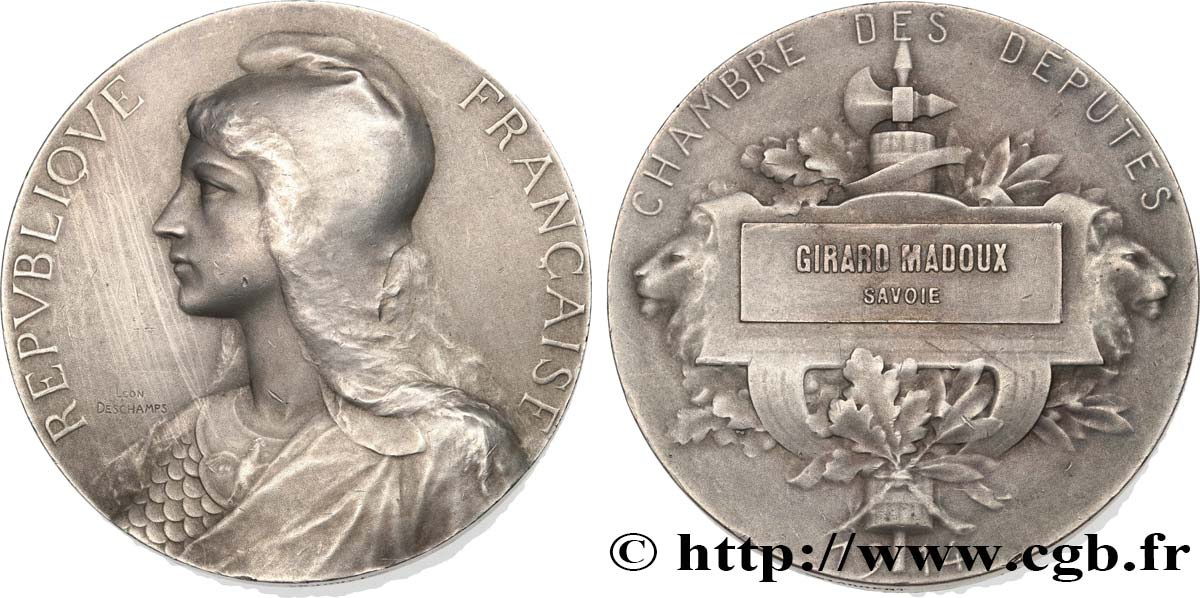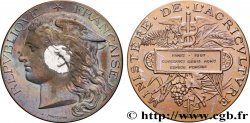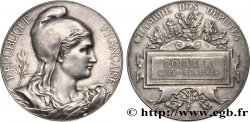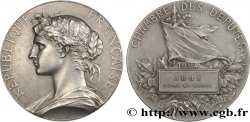Live auction - fme_586719 - III REPUBLIC Médaille parlementaire, Chambre des députés, XIe législature
You must signin and be an approved bidder to bid, LOGIN TO BID. Accounts are subject to approval and the approval process takes place within 48 hours. Do not wait until the day a sale closes to register. Clicking on "BID" constitutes acceptance of the terms of use of cgb.fr private live auctions.
Bids must be placed in whole Euro amounts only. The sale will start closing at the time stated on the item description; any bids received at the site after the closing time will not be executed. Transmission times may vary and bids could be rejected if you wait until the last second. For further information check the Live auction FAQ
All winning bids are subject to a 18% buyer’s fee.
All winning bids are subject to a 18% buyer’s fee.
| Estimate : | 400 € |
| Price : | no bid |
| Maximum bid : | no bid |
| End of the sale : | 16 June 2020 18:51:20 |
Type : Médaille parlementaire, Chambre des députés, XIe législature
Date: 1914
Mint name / Town : 73 - Savoie
Metal : silver
Diameter : 51 mm
Orientation dies : 12 h.
Engraver DESCHAMPS Léon (1860-1928)
Weight : 61,74 g.
Edge : lisse + corne d’abondance ARGENT
Puncheon : corne d’abondance ARGENT
Rarity : UNIQUE
Coments on the condition:
Cette médaille présente de hauts reliefs et est recouverte d’une légère patine grise de médaillier. Rayures devant le visage de la république. De petits chocs
Obverse
Obverse legend : REPVBLIQUE - FRANÇAISE.
Obverse description : Buste de la République à gauche, portant une couronne de laurier sur un bonnet de la liberté, tenant de sa main gauche un drapeau, de sa main droite une branche d’olivier reposant une table des droits ; en bas à gauche LEON / DESCHAMPS.
Reverse
Reverse legend : CHAMBRE DES DEPUTES // 1914.
Reverse description : Faisceau de licteur entouré de feuilles et chêne et de laurier, devant un cartouche reposant sur deux têtes de lion sur lequel est inscrit en deux lignes GIRARD MADOUX / AISNE.
Commentary
Médaille attribuée en 1914 à Jean-Claude Girard Madoux, député de Savoie. Il naquit le 3 janvier 1882 à Chignin (Savoie) et décéda le 5 octobre 1929 à Chambéry (Savoie). Avocat de formation inscrit au barreau de Chambéry, il fut maire de Chignin de 1907 à 1929 et conseiller général du canton de Montmélian en 1910. Inscrit au groupe des partis républicain radical et radical socialiste. Il fut élu député de la Savoie en 1914 sous la XIe législature (26 avril 1914-7 décembre 1919). Il ne se représenta pas lors des élections législatives de 1919.
Medal awarded in 1914 to Jean-Claude Girard Madoux, Member of Parliament for Savoie. He was born on 3 January 1882 in Chignin (Savoie) and died on 5 October 1929 in Chambéry (Savoie). A lawyer by training and registered with the Chambéry bar, he was mayor of Chignin from 1907 to 1929 and general councillor for the canton of Montmélian in 1910. He was a member of the Radical Republican and Radical Socialist parties. He was elected Member of Parliament for Savoie in 1914 during the 11th legislature (26 April 1914-7 December 1919). He did not run again in the 1919 legislative elections.
Medal awarded in 1914 to Jean-Claude Girard Madoux, Member of Parliament for Savoie. He was born on 3 January 1882 in Chignin (Savoie) and died on 5 October 1929 in Chambéry (Savoie). A lawyer by training and registered with the Chambéry bar, he was mayor of Chignin from 1907 to 1929 and general councillor for the canton of Montmélian in 1910. He was a member of the Radical Republican and Radical Socialist parties. He was elected Member of Parliament for Savoie in 1914 during the 11th legislature (26 April 1914-7 December 1919). He did not run again in the 1919 legislative elections.








 Report a mistake
Report a mistake Print the page
Print the page Share my selection
Share my selection Ask a question
Ask a question Consign / sell
Consign / sell
 Full data
Full data














